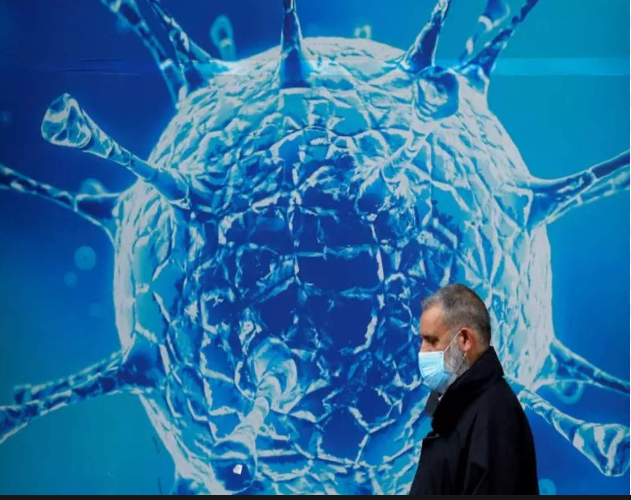As COVID-19 hospitalizations rise once more in the new year, JN.1 is the predominant coronavirus strain that is spreading throughout the United States.
The Centers for Disease Control and Prevention estimate that most new coronavirus infections in the United States over the last two weeks have been caused by the novel COVID-19 variant JN.1.
The strain that is growing the quickest in the United States is JN.1, an omicron subvariant. According to CDC estimates, it increased from approximately 3% of COVID-19 cases in November to over 62% in recent weeks. According to the agency, JN.1, or “pirola,” is closely related to BA.2.86. In comparison to other currently circulating variations, it concludes that “at this time, there is no evidence that JN.1 presents an increased risk to public health.”

jn.1
However, COVID-19 activity is still high and spreading in numerous regions. Hospitalizations from COVID-19 are occurring at a rate not seen since the previous winter. Based on CDC data, approximately 34,800 new hospital admissions for COVID-19 were reported last week. In an update released on Friday, the CDC stated that “emergency department visits for COVID-19 are highest among infants and older adults but are also elevated for young children.” According to wastewater surveillance statistics, the COVID-19 virus is “very high” in the United States.

The CDC stated in their update that “at this time, COVID-19 infections are causing severe disease less frequently than earlier in the pandemic, despite the high levels of infection measured using wastewater viral activity and test positivity data.” However, COVID-Provisional death numbers show that 19 deaths increased to over 1,600 in the week ending December 9. In order to avoid serious illness, public health professionals advise Americans to receive the most recent COVID-19 vaccination. But there hasn’t been much uptake.

Frequently asked questions
How can I prevent COVID and influenza?
Make sure you cough or sneeze into your elbow or a tissue, discard the tissue, and wash your hands right away. Steer clear of individuals who are confirmed or suspected of having the flu, COVID-19, or RSV, especially in crowded indoor areas. You might want to think about donning a mask.
What is the treatment for Corona flu?
The majority of adults with mild cases of COVID-19 can treat their symptoms similarly to how they would treat a seasonal flu: stay home and rest, take ibuprofen or paracetamol for fever and pain relief, stay hydrated, and use cough medicine if necessary. One of the most prevalent COVID-19 symptoms is fatigue.
What are the symptoms of the flu (RSV) and COVID-19?
Fever, coughing, and shortness of breath are common symptoms of COVID-19, respiratory syncytial virus (RSV), and influenza (flu). It can be challenging to differentiate between respiratory virus-related illnesses due to their similar symptoms.
Can you have a cold and COVID at the same time?
Respiratory viruses can sometimes infect you in pairs, so COVID-19 can also accompany a cold or the flu. It is known as “coinfection,” but as far as current scientific understanding allows, it is an uncommon occurrence.
What antiviral is used for the flu?
There are four FDA-approved influenza antiviral drugs recommended by the CDC for use against recently circulating influenza viruses.
- Rapivab (peramivir)
- Relenza (zanamivir)
- Tamiflu (oseltamivir phosphate, also available as generic)
- Xofluza (baloxavir marboxil)
images source: Google
Disclaimer: The opinions and suggestions expressed in this article are solely those of the individual analysts. These are not the opinions of HNN. For more, please consult with your doctor




































